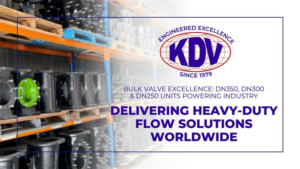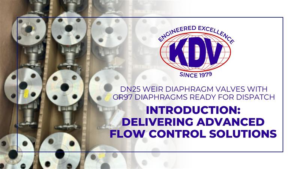Industrial-Grade Diaphragm Control for Corrosive Environments
Corrosion-resistant BSPP weir diaphragm valves with PTFE diaphragms are engineered for sectors that demand robust, contamination-free flow control. These valves solve a widespread challenge in process engineering—equipment degradation due to chemical exposure. PTFE’s superior chemical inertness, paired with BSPP threading, delivers leak-tight performance even under aggressive media conditions. With a strong track record in flow control solutions, our valves are trusted in facilities worldwide for their precision, durability, and ease of maintenance.
Technical Specifications & Global Standards
Our BSPP weir diaphragm valves are offered in DN15–DN100 sizes, manufactured according to EN 558-1 Series 1 and compatible with common DIN standards. Each valve includes a PTFE diaphragm and body linings such as ETFE, vulcanized rubber, or glass, chosen based on the media handled. Pressure ratings up to PN10 and temperature resistance up to 180°C provide flexible performance. All valves conform to ISO 9001 manufacturing standards and carry CE and ATEX certifications, ensuring reliable use in safety-critical systems. For more corrosive applications, our glass-lined diaphragm valves offer an excellent upgrade.
Use Cases Across Key Process Industries
BSPP weir valves with PTFE diaphragms are ideal for chemical manufacturing, water treatment, semiconductor fabrication, and pharmaceutical production, where maintaining media purity is non-negotiable. Their ability to integrate with dosing skids, batch reactors, and filtration systems makes them versatile across high-spec installations. When combined with pneumatic actuators, these valves deliver automated precision in environments requiring clean-in-place (CIP) or steam-in-place (SIP) functionality. Learn more about typical valve functions in industry on InstrumentationTools.com.
Design Engineering & Material Innovations
The weir-style diaphragm design minimizes dead space and supports excellent throttling performance, a key feature for process control. The PTFE diaphragm acts as a reliable barrier between media and actuator components, making it ideal for aggressive or hazardous chemicals. For enhanced protection, linings such as ETFE or rubber can be selected to suit specific pH ranges and thermal profiles. Internally, streamlined flow paths reduce pressure drop, while externally, the valve body and operator options are tailored for easy manual or remote operation. The materials and geometry ensure fewer breakdowns and longer lifecycle costs.
Installation & Maintenance Tips
Threaded BSPP connections ensure simple and secure pipe integration, especially in modular systems where welding is undesirable. Standardized face-to-face dimensions allow fast replacements or retrofits. Maintenance cycles are extended due to the non-wetted actuator design and resilient PTFE diaphragm. Engineers commonly pair these with spare WT diaphragms to reduce downtime during planned servicing.
FAQs – BSPP Weir Diaphragm Valves
Q1: What makes this valve ideal for corrosive applications?
The PTFE diaphragm and optional glass, rubber, or ETFE linings offer superior resistance to acids, alkalis, and solvents, preventing corrosion.
Q2: Can this product be automated for smart systems or PLCs?
Yes. It’s compatible with a wide range of actuators including electric and pneumatic units for seamless integration into automated workflows.
Q3: How does this model compare to older-generation valves?
It features updated sealing geometry, optimized flow paths, and enhanced material compatibility—providing better longevity and flow accuracy.
Q4: Are replacement parts available globally?
Yes. We maintain a global network of parts for fast delivery of diaphragms, actuators, and valve bodies.
Q5: What customization options are available?
Clients can choose from custom linings, manual or actuated operation, different body coatings, and port types (flanged, threaded, socket-welded).
Our corrosion-resistant BSPP weir diaphragm valves with PTFE diaphragms offer chemical durability, design efficiency, and process control flexibility.
Talk to our team to find the ideal configuration for your application.

